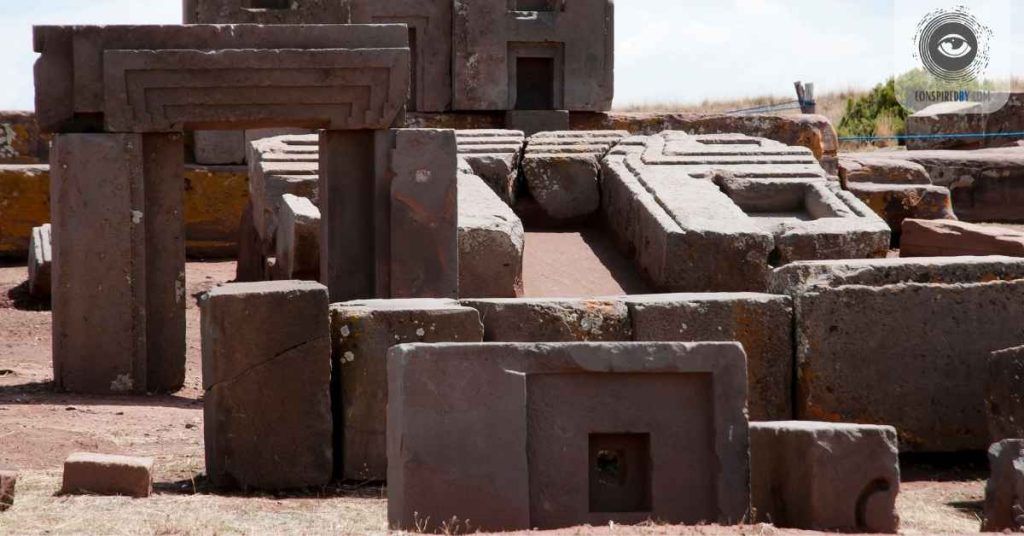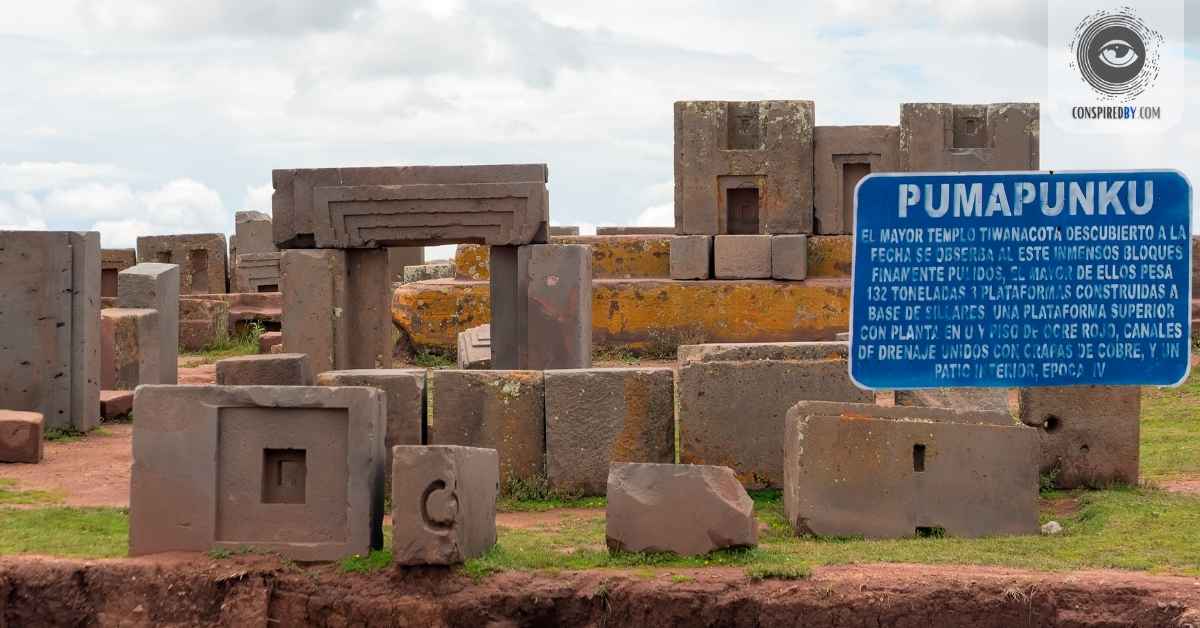Puma Punku is a super cool place that many people find fascinating because it has these famous stones. These stones are special because they’re super precise and have intricate designs.
But how was it cut that way 1000 years ago? Let’s find out. In this article, we will talk about the story of the Puma Punku stones, why it’s so special, and what is the mystery behind Puma Punku Stones.
To write this article, we searched including Wikipedia.com, thearchaeologist.org, and social media sites.
The Marvels of Puma Punku Stones
When you go to Puma Punku, you’ll see these really big and heavy stones. Some of them weigh more than 100 tons! It’s amazing how it was put there.
The way the stones are cut and fit together is mind-blowing. They fit perfectly without using any glue or cement. How they did it, the people are still surprising.

How old actually Pumapunku stones are? | Puma Punku carbon dating
Determining the age of Puma Punku stones has been a subject of great interest. Carbon dating techniques suggest that these stones could be over 1,000 years old, dating back to the time of the Tiwanaku civilization. However, among archaeologists and researchers, these stones’ exact age and origin continue to be debated.
Ancient Story about Puma Punku of Tiwanaku
Puma Punku holds a significant place within the grand Tiwanaku complex, nestled near the shores of Lake Titicaca in Bolivia. The ruins of Puma Punku were first discovered in 1549 by Pedro Cieza de Leon, unearthing a site that would become a source of wonder and fascination for historians and archaeologists.
The Tiwanaku civilization was really amazing. They lived a long time ago, from around 200 AD to 1000 AD. One place that shows how incredible they were is Puma Punku. Puma Punku is in a high area called the Andean plateau, which makes it extra special.
It has lovely surroundings, and it shows how clever and skilled the Tiwanaku people were at making things.
The Tiwanaku civilization was a strong empire that existed long ago. They had a big area that covered places like Bolivia, Peru, and parts of Chile. The Tiwanaku people were very smart and knew a lot about building things. They made incredible structures like Puma Punku that leave us amazed.
When people found the ruins of Puma Punku many years ago, it was a big deal. It happened in the early 1900s, making everyone interested in this ancient place. Puma Punku is located in the Tiwanaku complex, and the stones there are amazing. This made people very curious, so they started to investigate and learn more about it.
The stonework at Puma Punku is mysterious and incredible. The stones are super big and have very precise cuts and shapes. They fit together so perfectly that even a tiny razor blade can’t fit between them.
It’s amazing how the people who built this place had great skills and knew so much about engineering. Even today, researchers and visitors are amazed by the amazing things the Tiwanaku people achieved at Puma Punku.
The Great Mystery Behind Puma Punku (New Theories)
Puma Punku is a really mysterious place that we still don’t fully understand. People have different ideas about where it came from and how it was made. Some think, there were ancient civilizations that had special tools and knew things that were really advanced for their time. People are still studying Puma Punku and finding new things, which makes it even more interesting.
Are Aliens Behind Puma Punku?
Some people believe that Thiwanku has a connection with Aliens, but experts have a different opinion. They say that the skilled and intelligent people of the Tiwanaku civilization actually created incredible stonework. Even though the stones may look unusual, it shows that our ancestors were clever and had a great understanding of things.
What Destroyed Puma Punku?
The reasons for the destruction of Puma Punku are still debated. Historical evidence suggests that natural disasters, including earthquakes and a tidal wave from Lake Titicaca, might have contributed to the ruins we see today. Additionally, the passage of time and human activities have taken their toll on this once magnificent site.
Conclusion
Puma Punku and its stones teach us about the amazing things people could do a long time ago. The stones are made very carefully and it’s hard to understand how they did it. This makes us really curious and interested. If you want to see Puma Punku or learn more about it, it’s a chance to think about how great our ancestors were.
Also, read another place is Yellowstone national park.


